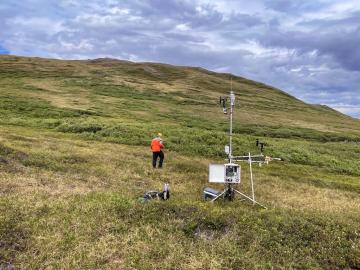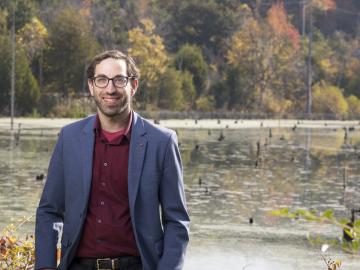Filter News
Area of Research
News Type
News Topics
- (-) Exascale Computing (1)
- (-) Summit (2)
- 3-D Printing/Advanced Manufacturing (2)
- Artificial Intelligence (1)
- Big Data (1)
- Bioenergy (10)
- Biology (18)
- Biomedical (4)
- Biotechnology (4)
- Chemical Sciences (1)
- Clean Water (5)
- Climate Change (5)
- Composites (1)
- Computer Science (3)
- Decarbonization (1)
- Energy Storage (1)
- Environment (24)
- Fusion (1)
- High-Performance Computing (5)
- Materials (3)
- Materials Science (1)
- Mercury (3)
- Microscopy (1)
- Nanotechnology (1)
- Neutron Science (1)
- Polymers (1)
- Security (1)
- Sustainable Energy (8)
Media Contacts

Improved data, models and analyses from ORNL scientists and many other researchers in the latest global climate assessment report provide new levels of certainty about what the future holds for the planet

As rising global temperatures alter ecosystems worldwide, the need to accurately simulate complex environmental processes under evolving conditions is more urgent than ever.

The Accelerating Therapeutics for Opportunities in Medicine , or ATOM, consortium today announced the U.S. Department of Energy’s Oak Ridge, Argonne and Brookhaven national laboratories are joining the consortium to further develop ATOM’s artificial intelligence, or AI-driven, drug discovery platform.




